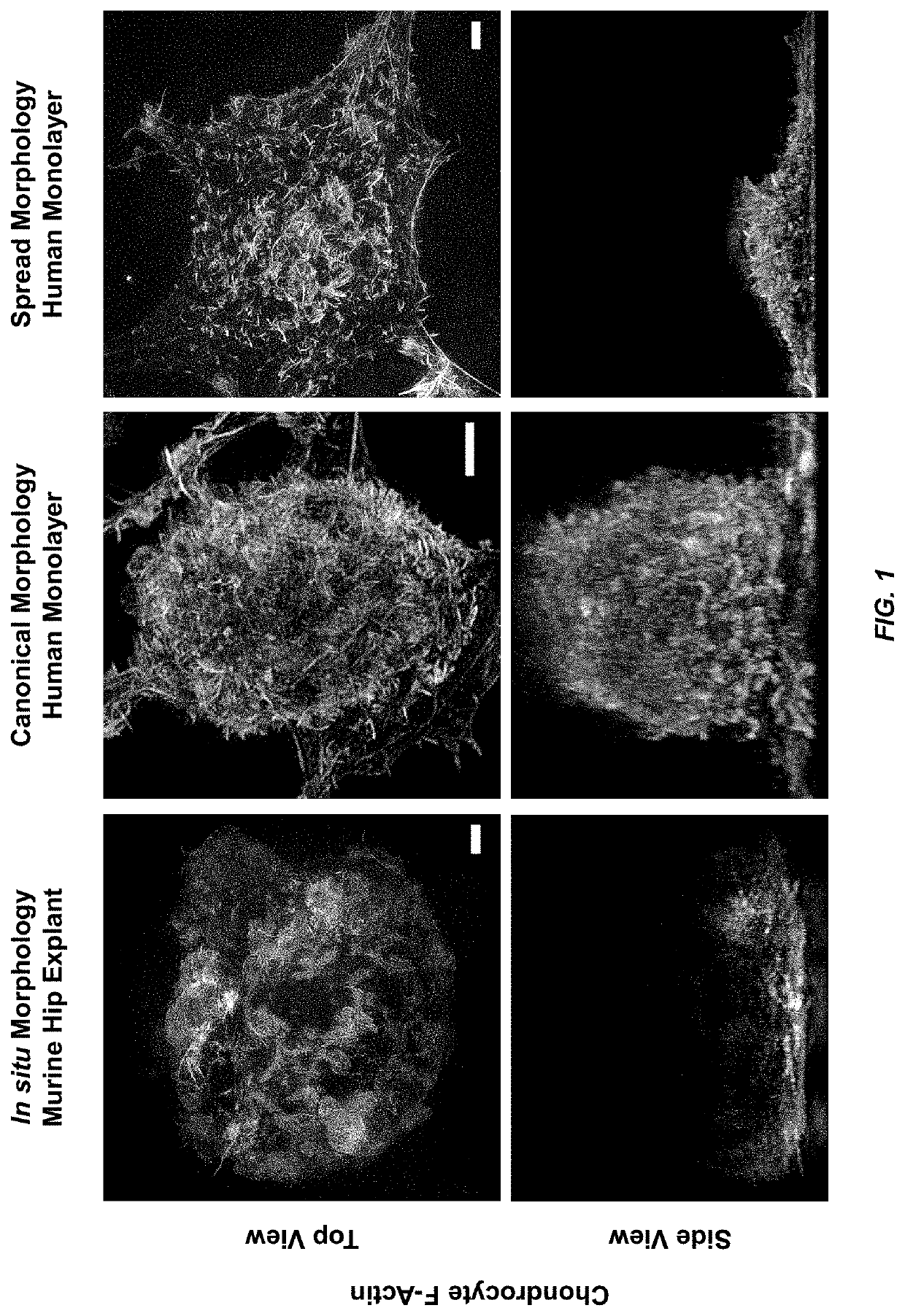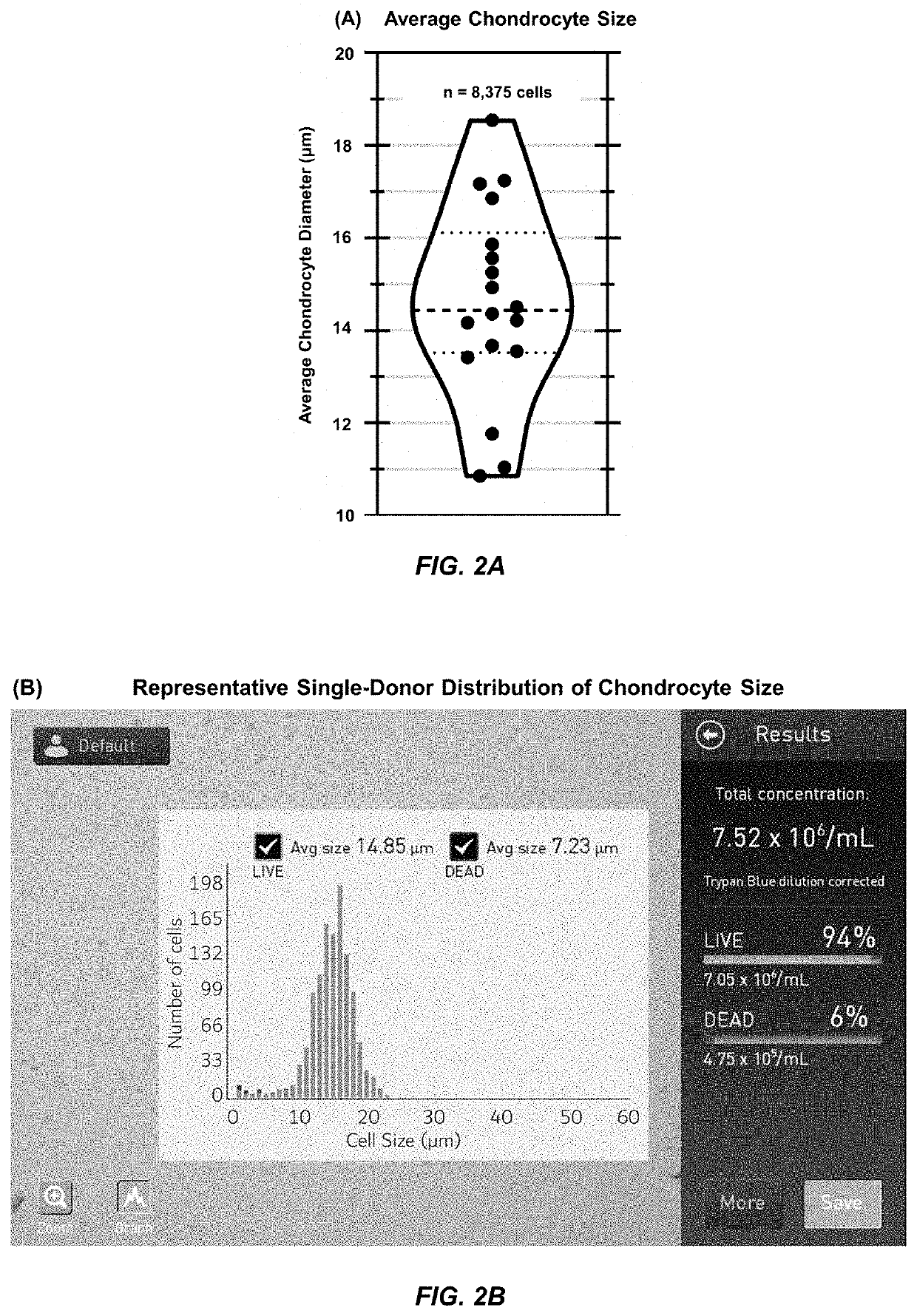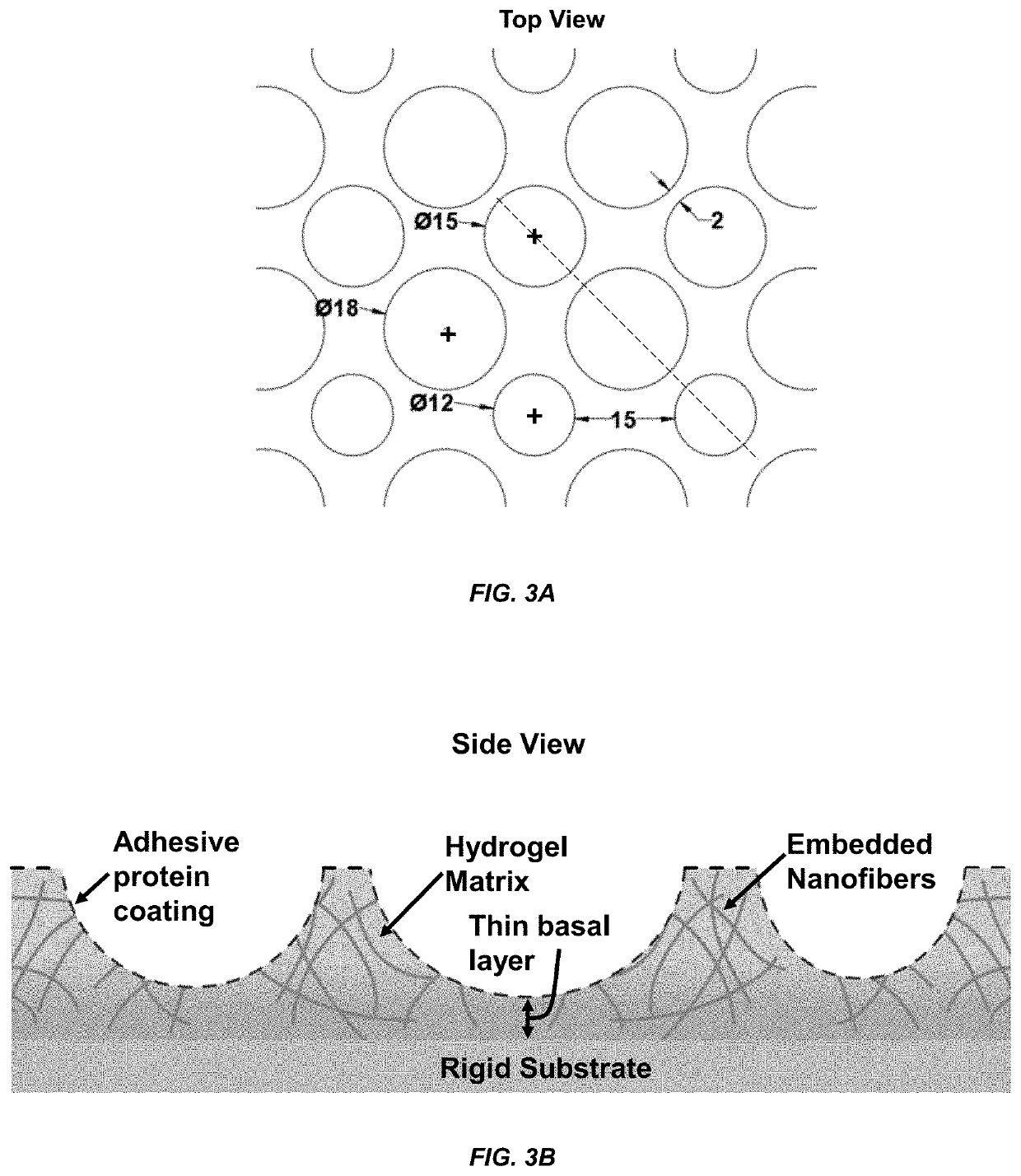Micropatterned hydrogel for cell cultures
a cell culture and hydrogel technology, applied in the field of micropatterned hydrogels, can solve the problems of limited treatment options, no known medical treatment effectively addressing the underlying molecular, and the failure of cartilage repair to regenerate hyaline articular cartilage, etc., to facilitate cell adhesion and promote adhesion.
- Summary
- Abstract
- Description
- Claims
- Application Information
AI Technical Summary
Benefits of technology
Problems solved by technology
Method used
Image
Examples
example 1
te Morphology Influences Internal Architecture
[0059]When plated on standard 2D platforms, chondrocytes tend to rapidly lose their canonical spheroidal morphology due to the adherent chondrocyte cells being on a hard and flat substrate, and adopt a fibroblastic phenotype within 10-14 days of culture. These morphological changes can result in substantial changes to chondrocyte architecture, including the length, density, and distribution of cortical actin fibers. The in situ chondrocyte shown in FIG. 1 (left) can be seen to have an actin network with length and density more similar to the chondrocyte displaying the canonical phenotype in FIG. 1 (middle), than to that of the chondrocyte in FIG. 1 (right) which has a spread morphology that is more typical of chondrocytes in standard monolayer culture. Note that the in situ chondrocyte in FIG. 1 (lower left) is not flat, but that the turbidity of the tissue prevented imaging its full thickness, thereby illustrating the difficulties inher...
example 2
te Diameter
[0060]The diameter of 8,375 chondrocytes from 18 independent donors was measured using a Countless II FL cell counter. As shown in FIG. 2A, human chondrocytes were found to have a mean diameter of 14.6 μm±2.1 μm (S.D.), and this data represented the diameter measurements from 8,375 cells over n=18 individual donors. For each donor, the cell counter provided direct measurements of cell density (i.e., number), viability (based on trypan blue exclusion, circularity, and diameter), and average diameter, as well as a pictographic histogram of the distribution of diameters within the sample. The chondrocyte diameter distribution of average donors depicted a Full Width at Half Maxima (FWHM) of 12-18 μm, as shown in FIG. 2B. These measurements served as the basis for the selection of CellWell diameters of 12, 15, and 18 μm.
example 3
Design and Manufacturing
[0061]Computer-aided design (CAD) files were generated in SolidWorks consisting of an array of circles of 12, 15, and 18 μm diameters and used to generate the photomask pattern, as shown in FIG. 3. The design was chosen such that the distance between any two consecutive wells varied from 2 μm to 15 μm.
[0062]Micropatterned silicon wafers were obtained from the Utah Nanofab core lab at the University of Utah, USA, and standard contact lithography techniques were utilized to generate PDMS CellWell stamps. PDMS stamps were sterilized in an autoclave at 121° C. for 23 minutes. “Containment chambers” were microfabricated with 15 μm-tall walls, in which the CellWell casting process took place. These walls were thus constructed to be ˜8 μm taller than the hemispheroids in the stamps to provide room for several microns of material to separate the basal surface of the cells from the underlying cover glass without adding excessive bulk that can confound imaging experime...
PUM
| Property | Measurement | Unit |
|---|---|---|
| diameter | aaaaa | aaaaa |
| distance | aaaaa | aaaaa |
| diameter | aaaaa | aaaaa |
Abstract
Description
Claims
Application Information
 Login to View More
Login to View More - R&D
- Intellectual Property
- Life Sciences
- Materials
- Tech Scout
- Unparalleled Data Quality
- Higher Quality Content
- 60% Fewer Hallucinations
Browse by: Latest US Patents, China's latest patents, Technical Efficacy Thesaurus, Application Domain, Technology Topic, Popular Technical Reports.
© 2025 PatSnap. All rights reserved.Legal|Privacy policy|Modern Slavery Act Transparency Statement|Sitemap|About US| Contact US: help@patsnap.com



